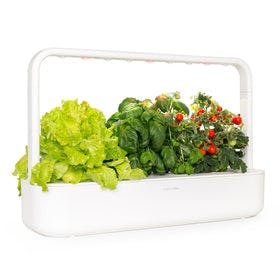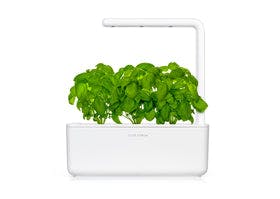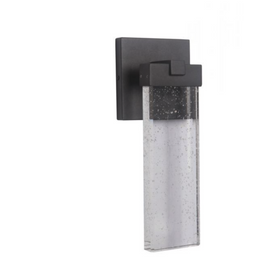
What Is a Bee Lawn and How to Care for It?
Last Updated: Apr 9, 2025The first alarm sounded about a decade ago about CCD—bee colony collapse disorder, wherein beekeepers reported a drastic increase in adult honeybees’ disappearance from hives. An excellent graph at beeinformed.org shows while a 15-20 percent loss is an “acceptable winter loss” of a colony, since 2006/7, total winter and total annual losses have risen markedly—to as much as 45 percent in 2012/13. Several causes of CCD have been identified, including infection of the bees with various pathogens and increased pesticide exposure. Other factors frequently cited are poor nutrition of the bees, lack of genetic diversity, and loss or pollution of their habitats.
Table of Contents
- Why Is Bee Lawn Care Important?
- Why Do We Have Flowerless Lawns?
- What Are the Benefits of Flowering Lawns?
- How Do You Make a Bee Lawn?
- Choosing Flowers for a Bee Lawn
- Can You Buy Bee Friendly Lawn Fertilizer?
- Bee Lawn and Conservation

The U.S. Department of Agriculture says that pollination by managed honey bee colonies has added over $15 billion to the United States agriculture industry each year. Without honeybees, we could lose the plants that bees pollinate, the animals that eat those plants, and others up the food chain. The world’s food supplies are in danger if we lose our bees.
Why Is Bee Lawn Care Important?
The quality of nutrition available to bees is directly related to the quality of nutrition available to humans, says MacArthur Fellow and Distinguished McKnight, Professor in Entomology Dr. Marla Spivak. She hosted her 2014 TED talk about the disappearance of bees. She goes on to describe how current agricultural practices in the United States are particularly bee-unfriendly. Planting acres upon acres of a single crop with no intervening or bordering flowers produces what she calls a “food desert for bees.” The substitution of artificial fertilizers for the practice of letting fields go fallow to build up soil fertility has reduced the presence of bee-friendly flowering plants over our agricultural landscape. Some bee-friendly flowering plants like clover and alfalfa are considered weeds. Similarly, artificial pesticides like neonicotinoids can either kill bees outright when they come to gather pollen. It also affects them neurologically so that it may be challenging to find their way home to their hive.
But the situation, she says, is not hopeless. Everyone can help in two ways: plant bee-friendly flowers and don’t contaminate them with pesticides. If you own or manage a lawn, it might be even easier than you think. It seems that switching out even part of your turfgrass for flowers can do wonders for supporting the bees among us.
Why Do We Have Flowerless Lawns?
In 17th century England, a well-maintained lawn was a sign of personal wealth, as it cost a great deal in human labor to cut (hand-scythe) and maintain it. In the United States' early history, there were lawns sometimes cultivated for sports, like lawn bowling and golf. Lawns eventually became associated with city parks and then migrated “from the civic center to North America’s backyards.” All of which is to say, why we have the lawns we have is somewhat arbitrary.
What Are the Benefits of Flowering Lawns?
Flowering lawns are beautiful, they help increase lawn resilience, and the natural diversity can also benefit various insects and animals.
A University of Minnesota Bee Lab report on Flowering Bee Lawns for Pollinators puts it this way: Lawns are typically established for aesthetic purposes and show neatness and care. A flowering lawn is different than a traditional lawn. It's a natural mixture of flowering plants and turf grasses. Flowering lawns increase lawn resilience, provide natural diversity that benefits both insects and animals, and look beautiful. We can preserve the human use of lawns and improve their ability to support biodiversity by incorporating flowering plants.
Gardening & Outdoor
Shop the best high-performing gardening and outdoor products that impact your health, wealth, and the planet through their use.

Click & Grow Smart Garden 9
Click & Grow
In Stock
3 Colors

Canarm CORIN LED Black Outdoor Light
Canarm
Out of Stock

Click & Grow Smart Garden 3
Click & Grow
In Stock
3 Colors

Craftmade Aria Outdoor LED Wall Mount Light
Craftmade
In Stock
2 Colors

Canarm LOL386WH White LED Outdoor Sconce
Canarm
In Stock

Nutritower Vertical Hydroponic Indoor Garden
Nutritower
Out of Stock

Canarm FAE LED Black Outdoor Light
Canarm
In Stock

Canarm BARDO LED Black Outdoor Light
Canarm
In Stock

Canarm SINDRI LED Black Outdoor Light
Canarm
In Stock

Canarm LOKI LED Black Outdoor Light
Canarm
In Stock
How Do You Make a Bee Lawn?
The University of Minnesota’s Bee Lab states homeowners have two choices for changing a non-flowering lawn into a flowering one. Start from scratch and plant the grass right and the flowers or seed flowers into an existing lawn. The second option is cheaper, but flowers seeded into a lawn will compete with the grass. They need to be chosen carefully for your particular growing conditions: water, sun, and type of soil. Be sure to provide enough seed density and 200 seeds/square foot for some varieties of plants. Other techniques you can try to improve the competitiveness of the flowers you’re planting are “scalping.” Scalping means cutting the grass very short (1.5 inches) to allow greater sun exposure for the flower seedlings and aggressive watering (twice a day for 15-20 minutes).

If you’re starting over with a new lawn, the Bee Lab recommends this link. For flowering lawns, you need to add flower seeds to these recommendations. Kentucky bluegrass and hard fescue seem to be the best varieties of turf for co-planting with flowers (e.g., clover). In their trial, they planted both grass and flowers in late fall and covered the ground with germination mats to prevent the seeds' erosion in heavy rain. (For more detail in both scenarios, see the Bee Lab’s report, Flowering Bee Lawns for Pollinators.)

The MN Landscape Arboretum has its suggestions for planting a bee lawn. The bee lawn demonstration there actually shows five different methods for adding flowers to a lawn:
- Over-seeding with three kinds of flowers to existing turf
- Scalping grass to 1” and seeding with three types of flowers
- Removing grass and seeding fine fescue and three types of flower seeds into bare soil
- Scalping grass to one inch, aerating and over-seeding with fine fescue and three kinds of flower seeds and
- Aerating grass and over-seeding with fine fescue and three types of flower seeds.

Choosing Flowers for a Bee Lawn
The Arboretum recommends three types of flowers: white clover (Trifolium repens), thyme (Thymus serpyllum), and self-heal (Prunella vulgaris). Native species from the Bee Lab trial include buffalo plum (Astragalus crassicarpus), lanceleaf coreopsis (Coreopsis lanceolata), and calico aster (Symphyotrichum lateriflorum).

Can You Buy Bee Friendly Lawn Fertilizer?
Weed control can be a problem. The Bee Lab recommends hand weeding, spot treating with selected herbicides, or using corn gluten meal. “Which acts as both a pre-emergent herbicide and a fertilizer, is an organic option that will work once all grasses and flowers are established in lawns.” Other than management of pesky weeds, a bee lawn should be relatively easy to maintain: mowing to a 3.5 to 4” height is recommended; 2-3” of precipitation a month should suffice. If you return the mowing clippings to the lawn and keep mowing heights high, not much fertilizing should be necessary.

Bee Lawn and Conservation
A bee lawn is part of a plan for what’s called “reconciliation ecology.” The Bee Lab defines it as “a conservation philosophy that seeks to improve human landscapes' ability to support biodiversity, while still allowing for human use.” It’s a concept that goes along with the bigger picture of resilient design, “the intentional design of buildings, landscapes, communities, and regions to respond to natural and manmade disasters and disturbances, and long-term changes emerging from climate change.” The Resilient Design Institute is in the process of establishing a RELi checklist for design resilience.

As New Year’s resolutions begin to gel, think about what you want for your home this spring and summer. Why not set personal goals for reconciliation ecology and resilient design today by considering a bee lawn in your yard? The bees, and our food supply, will benefit—and you will get to look at beautiful flowers outside your window.
Donna Pols Trump
Donna Pols Trump’s work has been published in literary magazines and online. She has received several Pushcart Prize nominations. Donna’s education includes degrees in Biology and Physical Therapy and a host of writing classes taken and taught at The Loft Literary Center in Minneapolis. Her short story “Portage” was selected by judge Anne Tyler for first prize in a 2018 contest sponsored by december magazine.
